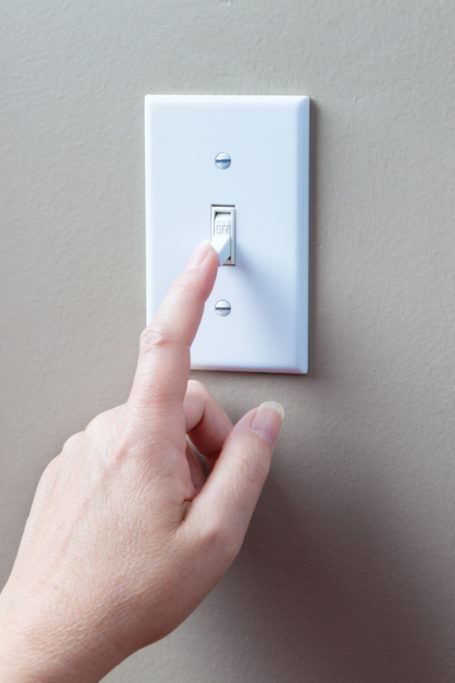Simplifying the Moving Day Process
Whether you are a veteran mover, haven’t moved in years, or are a first-timer, the process can be overwhelming. If you are planning a local or long-distance move, organizing and planning well enough in advance can be the key to a successful and simple move.

Hiring a mover
When hiring a professional mover, be sure to get estimates from at least two moving companies as soon as you know when you will need their services. Most companies provide an estimate based on the weight of items to be moved and how many rooms there are in the home. Be sure to tell them if certain items will not be going on the moving truck—this will make a difference in the quoted weight. You can also request for the movers to pack for you, which could dictate your packing timeline. Double-check that you are on their calendar for the agreed-upon day, especially if you are moving in the spring or summer since these are typically the busiest times of the year.
Moving yourself
If you are doing the move on your own, reserve a rental truck, trailer, or moving container as soon as you know your move date. If you’re relocating to a different state, the one-way drop-off costs for your truck rental can be quite expensive so shop around for the best rates.
Also, be sure you’re renting the right size truck or trailer—you don’t want to be caught short. Play it safe and rent the next size up if you’re not sure since the increase in cost is generally minimal (you can also ask the truck rental company what size they suggest). If you are using a trailer, check beforehand how much weight your vehicle can tow.
Next, ask friends and family members to help you with your move. Only ask people who are dependable and can comfortably lift heavy objects. If you are having difficulty finding the right help, websites like moving.com can help you find reputable day-laborers in your area.

Creating a checklist
Sometimes moves must take place sooner than expected, so planning your move months in advance may not be possible. However, a thirty-to-forty-five-day window is advised. Create a checklist of things you need to do to keep you organized and on task, and to avoid a last-minute rush.
Take inventory
Do a thorough walk-through of your home, and don’t forget the basement, garage, and attic. Make a detailed list of the items you want to take with you and those you will no longer need or want—this will help when getting an estimate from a moving company for weight purposes. Also, make a list of all your valuables and important documents, and keep it in a safe place that you can easily access.
Start decluttering
This is the time to purge, sell, and donate items you will no longer be using. The best way to do this is by working your way through each room, making separate piles, and then deciding what will stay and what will go. Decluttering early will help you to stay on your packing timeline and avoid last-minute purges.
Purchase packing supplies
Stock up on moving-grade boxes, packing tape, scissors, box cutters, permanent markers for labeling, bubble wrap and packing paper, and stretch wrap to protect your furniture. If you’re hiring a mover, ask them if they can estimate the number of boxes you’ll need. Patrick Sipera, sales manager at Olympia Moving and Storage Company, says, “Each room will need about ten boxes, so based on a four-bedroom, two-and-a-half-bath home, you can estimate you will need approximately140 to150 boxes.” Movers will sell them to you for a reasonable price. If you’re doing it yourself, home stores will have all the necessary packing supplies and other moving tools you will need.
Change your address and utilities
Be sure to contact your utility and cable company seven to ten days before your move and confirm that your new service will start on the requested date. Make necessary address changes as soon as three weeks in advance of your move. Most, if not all, address changes can be done online; these include your bank statements, credit card bills, magazine and newspaper subscriptions, and any other communication you typically receive through the mail.
Pack a first-night box
As moving day approaches, you will likely be busy tying up loose ends and have a lot on your mind, so preparing your first-night box well in advance will be one less thing you will have to think about. This box should include necessary toiletries, medications, a change of clothing, important paperwork, and any valuables that need to stay with you.

Moving day tasks
- If possible, plan for children and pets to be cared for by a friend or relative so you will not have to worry about their whereabouts all day.
- Make a list of the items that will not be going on the moving truck and alert the movers of what stays.
- Take pictures of items that needs disassembling; you will need to know how to reassemble them, so be sure to keep all parts together in a bag, and securely tape it to the item.
- If you are taking your appliances, such as a refrigerator or freezer, properly prepare them for transport by emptying their contents and allowing plenty of time for defrosting.
- If you have hired a professional mover, be available to answer any questions.
- Provide drinks and snacks for your helpers—this not only promotes goodwill but can help keep everyone’s energy level up.
Unpacking
Simplifying a move is not only about prepping ahead of time but also having a game plan for when you arrive at your new home. Tackling this second half of your move can be tiresome, so it’s important to be methodical during the unpacking process to help things go smoothly.
- Once you are moved in and all boxes and furniture have been put in their respective places, you can start the unpacking process.
- Unpack your daily essentials first, including the kitchen, bathroom, and bedroom boxes, as well as any necessary electronics.
- Break down empty boxes and discard them as soon as you can to avoid clutter, which can become a tripping hazard.
To increase the likelihood that your move is stress-free, establish a well-thought-out plan as you begin the process; determine a moving timeline to avoid a last-minute rush; create a detailed checklist, and methodically check the tasks off as they are completed; and put together a comprehensive inventory list of what you’re taking with you, especially your most valuable items. Most of all, be sure to ask for help if you need it.









